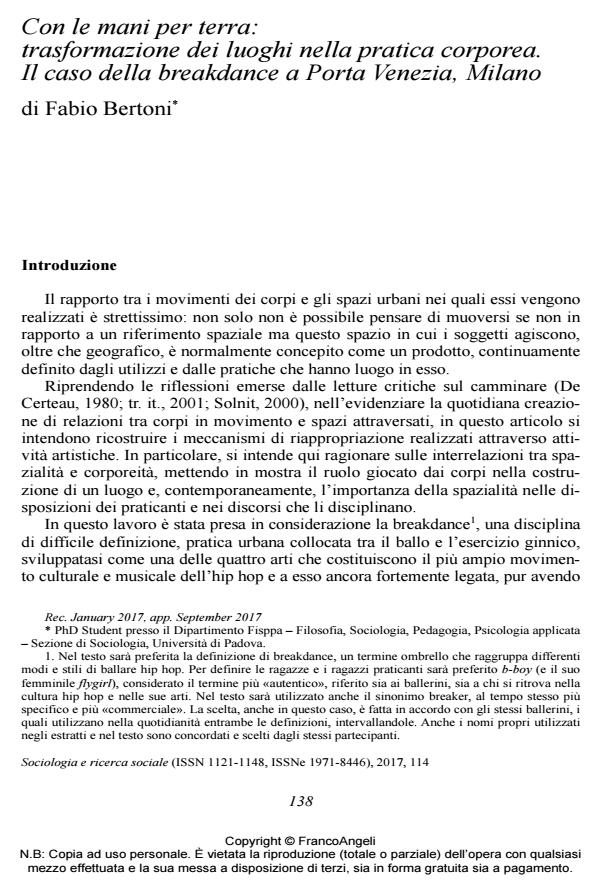Con le mani per terra: trasformazione dei luoghi nella pratica corporea. Il caso della breakdance a Porta Venezia, Milano
Journal title SOCIOLOGIA E RICERCA SOCIALE
Author/s Fabio Bertoni
Publishing Year 2017 Issue 2017/114
Language Italian Pages 25 P. 138-162 File size 244 KB
DOI 10.3280/SR2017-114007
DOI is like a bar code for intellectual property: to have more infomation
click here
Below, you can see the article first page
If you want to buy this article in PDF format, you can do it, following the instructions to buy download credits

FrancoAngeli is member of Publishers International Linking Association, Inc (PILA), a not-for-profit association which run the CrossRef service enabling links to and from online scholarly content.
- El nost Milan: il rap dei ‘nuovi italiani', tra riappropriazioni urbane e rivendicazioni identitarie Chiara Giubilaro, Valeria Pecorelli, in RIVISTA GEOGRAFICA ITALIANA 4/2019 pp.21
DOI: 10.3280/RGI2019-004002
Fabio Bertoni, Con le mani per terra: trasformazione dei luoghi nella pratica corporea. Il caso della breakdance a Porta Venezia, Milano in "SOCIOLOGIA E RICERCA SOCIALE " 114/2017, pp 138-162, DOI: 10.3280/SR2017-114007